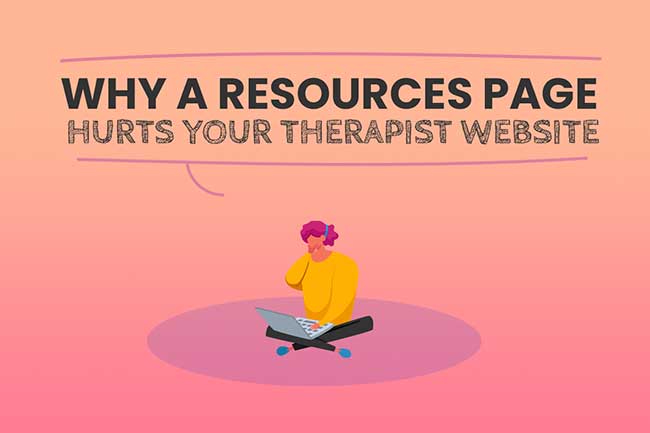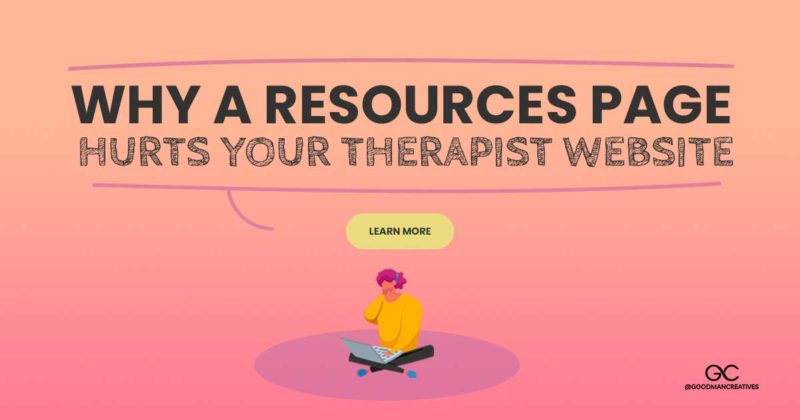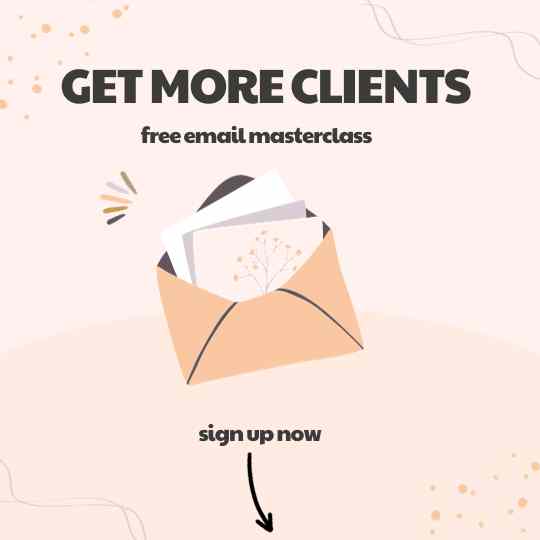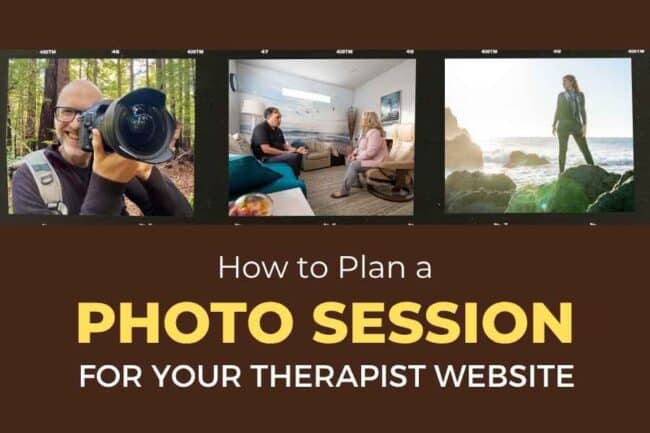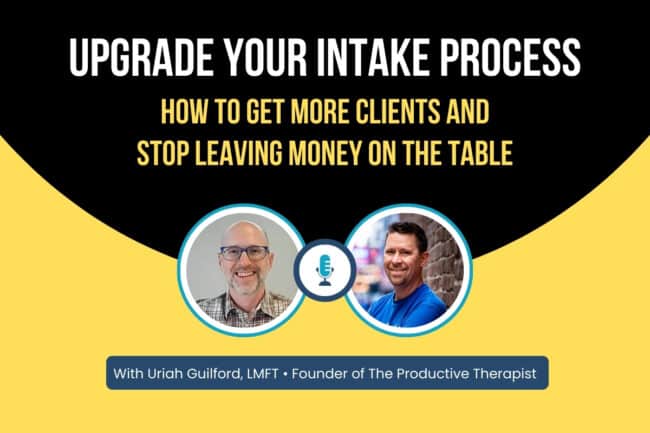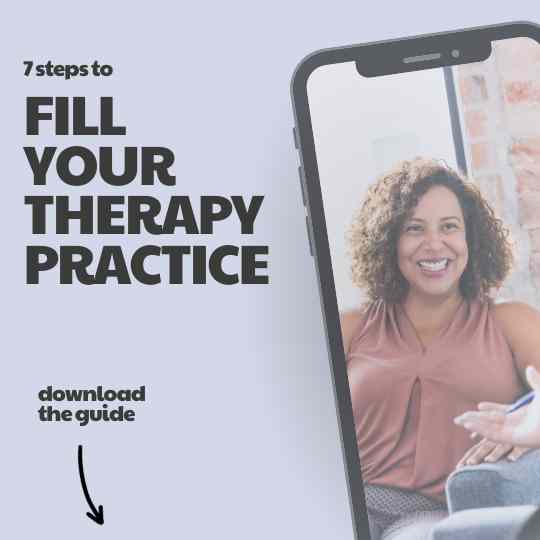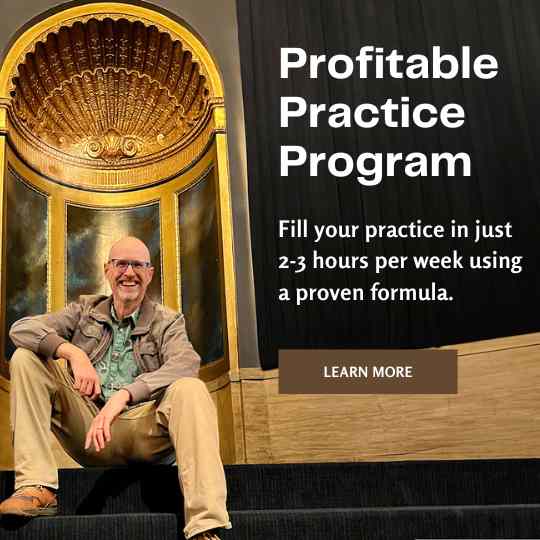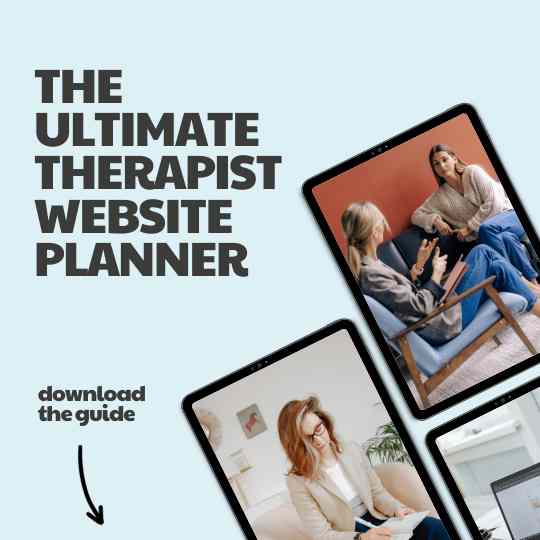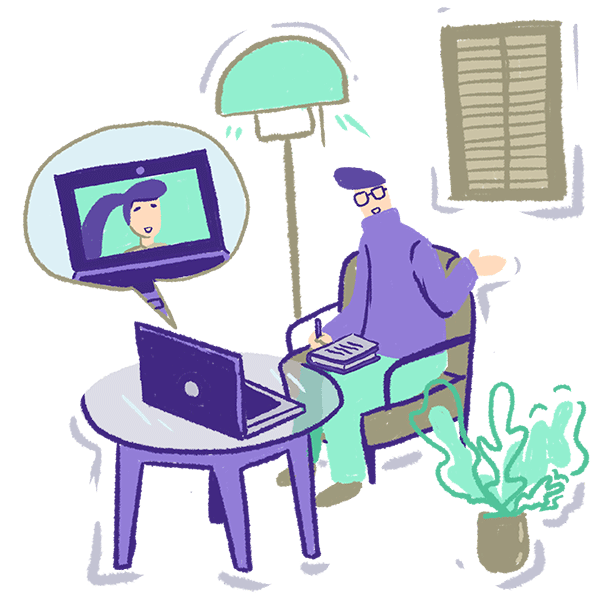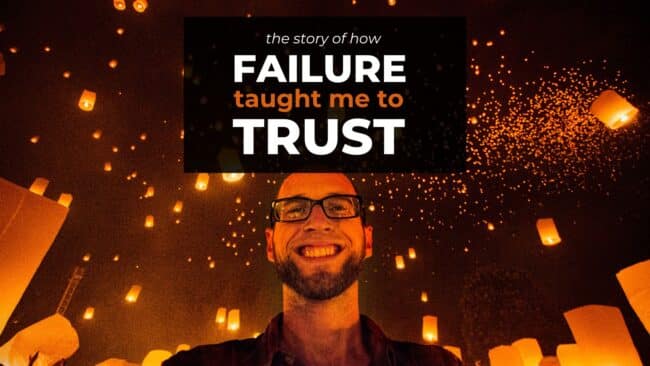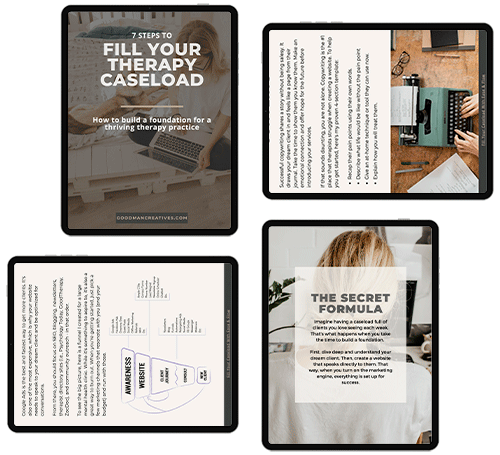Therapists are the nicest people! You give and you give – both during therapy sessions and in life in general.
That’s why it’s no surprise that so many therapist websites provide a resources page full of links to organizations, self-help books, and more. The problem is, this display of generosity is actually hurting your ability to turn your site’s visitor into a paying patient.
Let’s start by looking at the primary purpose of your therapist website.
Done right, your therapy website should lead potential clients through a “virtual intake call.” There are many ways to do this, including:
- Creating a page about each of your services and specializations
- Using powerful you statements and talking directly to your dream client
- Showing them that you “get them” before jumping in and talking about yourself
- Providing numerous ways for them to get help (ie, free phone consultations, lots of contact forms, etc)
- Using beautiful photography that sets the tone for your message
- Allowing your website’s design to guide them through their discovery process.
You’ll notice that nowhere on this list do I suggest, “providing ways for potential patients to leave your site,” which is exactly what a resources page encourages them to do. It’s a safe bet that once they click a link to learn about their local Codependents Anonymous meeting or to watch that Brené Brown Ted Talk on vulnerability, you’ve lost them forever.

People don’t actually visit your therapist resources page
Here’s the other sad truth about your resources page … most people don’t visit it. When someone comes to your therapy website, they are looking to you to become their resource. They want to know about your services and how you can help them heal and grow.
“As valuable as we might think our resource sections are, most people will visit your Home page, services pages and your blog long before they actually make it to a resources page.”¹
So what should you do with all these amazing therapist resources?
Here are 3 alternatives to having a dedicated therapist resource page”
. . .
1. Turn your resources page into individual blog posts
A blog is a great way to further your connection with a potential patient. It’s also a great way to boost your SEO. Let’s use the Codependence Anonymous example from earlier. Instead of having a single link on a resources page, you can write an entire blog post about what codependence is and it’s effect on the family.
By doing proper keyword research, you can discover what words and phrases to include in that post to help it succeed. You can still include a link to finding a meeting – while also increasing the chances that someone who needs your help with codependence can find you.
. . . . . . . .
2. Promote those resources on social media
There are two ways to go about creating social media posts about your resources. The easiest way is to share a link to someone else’s site with a little blurb about why it’s important. However, this is the least effective way to promote your therapy practice.
The goal of social media is to drive people to your website … not someone else’s.
Instead of sharing a generic link, you should be sharing your blog posts about that link. That way, when people click on a link in Facebook, Pinterest, LinkedIn, or wherever else you post it, they will visit your website to learn more.
. . . . . . . .
3. Use your resources page as inspiration for writing guest posts
One of the most effective ways to get your name out there and increase your SEO is to guest post on other sites. To again use our codependence example, you might try reaching out to a local newspaper and offer to write an article about the effects of codependence. The article could cover different ways to get help in your hometown, including support groups, resources, and, of course, a link to your therapy practice.

